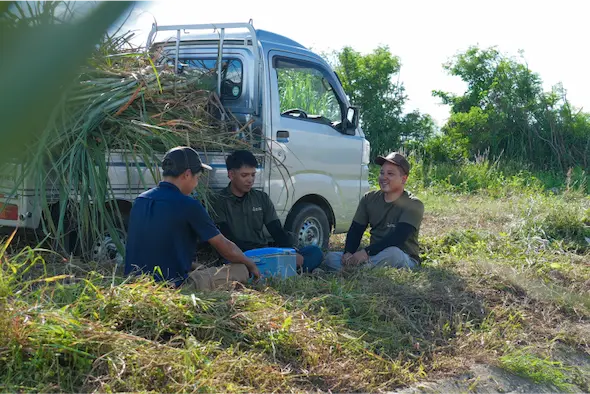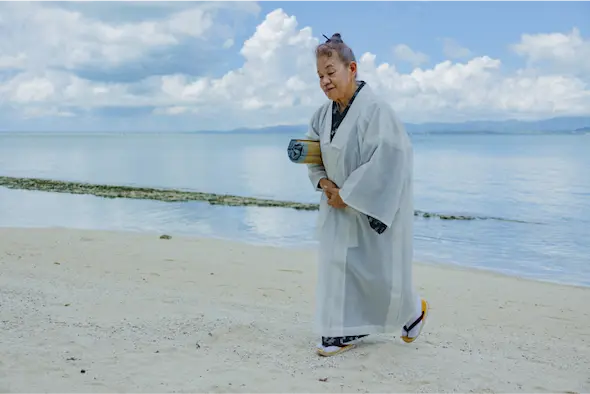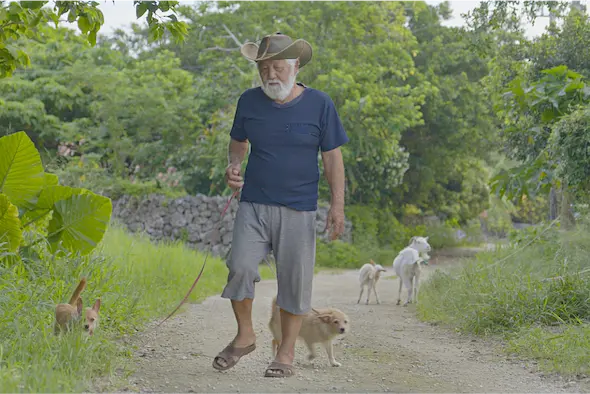All of the nature on the island is interconnected, and supports eachother. We must not interfere with this ecosystem.
90% of Iriomote is covered by a subtropical jungle. Mr. Morimoto, known as a pioneering guide in Iriomote, is thoroughly familiar with its diverse geology, history, natural environment, and wildlife ecology. This rich ecosystem is one of the reasons why the island was registered as a World Natural Heritage Site. We talked to him about the biodiversity of Iriomote, and his concerns for the future of the island.
What we treasure most about Iriomote is the connection between the natural environment and its living creatures.
Iriomote has abundant forests and water. Rain falls on the mountains and moistens the forests, eventually becoming rivers, pass through the mangrove forests and pour out into the coral reef sea. The flow of water creates an environment in which nature thrives. When you closely observe this cycle of nature, you can see that all organism are interconnected; helping each other in some way. For example, while butterflies larvae consume plant leaves, they repay the favor as adults, by aiding in pollination.
While the Iriomote wildcat is at the top of the food chain, numerous small organisms at the bottom of the ecosystem support its life. In the natural world, the strong also help the weak. Without this reciprocity, one side will perish.
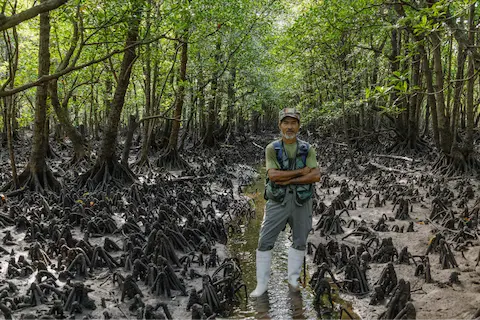
To preserve the island culture is to preserve the island's nature.
When cultivating rice, small organism attract frogs, birds, and as a result, Iriomote wildcats will prey on the animals. Thus the islanders of the past, fulfilled their role in the natural ecosystem through rice cultivation. They understood very well, that without the rich natural environment of Iriomote, they would no longer be able to coexist with their blessings. That's why we have always believed that there are gods in the high mountains, rivers and waterfalls. The practice of offering prayers and thanks to the gods of nature through Utaki (sacred places) and festivals, has continued for hundreds of years up to the present day. To preserve the island culture is to preserve the island's nature. It's very important to continue this tradition for the future.
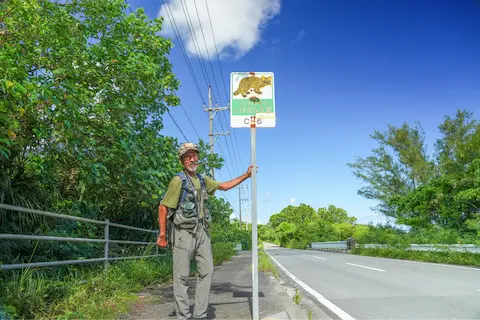
What can I do to continue this ecological cycle?
It is important not to disrupt our ecosystem, but recently, there have been troubling issues. One of these is beach debris. In the past, there were only a few glass floats, bottles and cans on the beach, but now it's all plastic, and the amount is increasing rapidly. The strong sunlight deteriorates the garbage quickly, especially plastic, which becomes difficult to collect once it breaks down. Crabs and hermit crabs can be seen eating styrofoam by scraping it. I hear crunchy sounds when I go to the beach at night! Rubbish such as fish nets and ropes, accumulate in the mangrove forests. They get tangled in the branches and roots, causing them to die. This led me to start a beach cleaning initiative called the "Yaeyama Environmental Network Iriomote Eco Project."
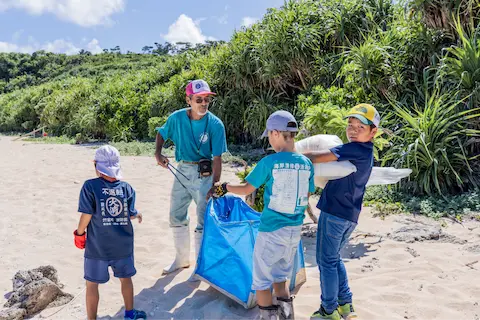
Humans are responsible for establishing a viable system of collecting human-generated rubbish.
In our ecosystem, there are nature's cleaners such as shellfish and various microorganisms. Shells and crabs eat fallen mangrove leaves, while microorganisms decompose animal carcasses. However, human-made rubbish often does not decompose naturally. It just keeps getting smaller and smaller, but never disappearing completely. Therefore, in order to preserve our environment, I believe we must make efforts to properly manage our rubbish. Most all of our rubbish was originally created to be of some use to us. It cannot all end up in our natural environment. We must close the loop by taking action to collect, recycle and reduce waste. Tourists too must help with our efforts when visiting. I want all visitors to enjoy and appreciate the natural wonders of Iriomote, and take back home that appreciation, and think about how they too can contribute.
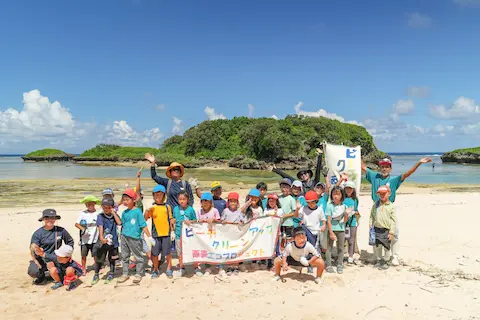
またん おーりとーりよー👋
"Matanōritōriyō👋"Please come again! in Iriomote dialect.
What is most precious to you?
What is most precious to the islanders?
